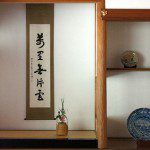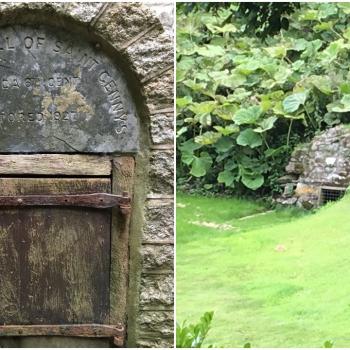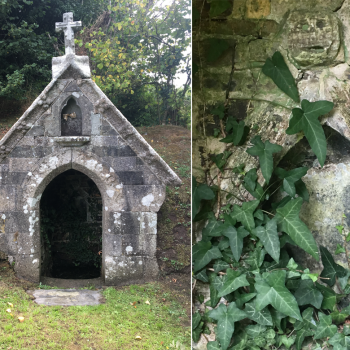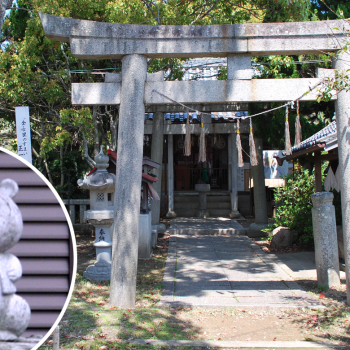Shinto and Nationalism
It is true Shinto has been linked with nationalism for a long time in Japan. This sentiment could be found in the Edo period (1603-1868) in the wake of anti-Buddhist movements; unlike the “indigenous” Shinto religion, Buddhism was viewed as continental and “foreign.” This was followed by the formation of State Shinto in the Meiji period (1868-1912), in which Shinto was ideologised and used as propaganda to ensure loyalty to the Emperor as a living god and to elevate the status of the Japanese people, as descendants of Amaterasu, above other races. State Shinto ideology fuelled Imperial Japan’s policies and actions, including abolishing freedom of religion, indoctrinating school children with nationalist propaganda, and Japan’s aggression in the Second World War.
State Shinto may not exist today, but Shinto has not yet lost its ties with the far-right in Japan. There are some Shinto priests who preach nationalist messages, as well as members of far-right parties who have appropriated Shinto imagery (which I have written about here). John Dougill at Green Shinto has been following the actions of the Association of Shinto Shrines (Jinja honchō), the administrative organisation that oversees about 80,000 Shinto shrines in Japan. According to Dougill’s reports, Jinja honchō has been participating in campaigns supporting nationalist politics, and pressuring for closer ties between Shinto and the state – in effect, something resembling a return to State Shinto.
Shinto’s Universal Potential
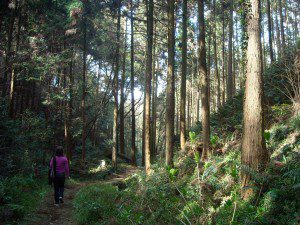
All of this isn’t good news for those trying to promote Shinto as a universal faith with beliefs and values that speak to all human kind – the celebration of life and love of nature. But Shinto is certainly not the only religion to suffer corruption at the hands of politicians and their supporters. We only need to look at current events to see just how damaging religion can be in the wrong hands. Sadly, Western Paganism has not been spared the touch of far-right and nationalistic ideology either. I’ve heard of followers of Asatru who say that they are hesitant to be open about their beliefs because of neo-Nazis who have adopted Asatru mythology and symbols to promote their cause. No religion is safe from radicalisation or politicisation.
However, I do not agree with Koichi Nakano’s view that Shinto can never be considered a universal religion. When we strip away the state-level meddling with Shinto for political means, what we are left with is a syncretic tradition based on folklore – the beliefs and practises of ordinary men and women who want to honour the spirits of nature. The growing international Shinto community is proof of this. And anyone, regardless of nationality or even religion, is welcome to pray at a Shinto shrine; I have visited many in Japan, and have never encountered anything but warmth and acceptance. What’s more, shrines play an indispensable role in tourism in Japan – in practise, Shinto actually helps to bring in foreigners and in doing so promote cultural exchange.
I am not the only one who believes that Shinto has universal potential. Other writers, both Japanese and non-Japanese, seem to share the same idea:
“People of all races and climes cannot help but express gratitude to the spirits of the land and of nature, to their ancestors, to the benefactors of society and state…Thus, while Shinto is a racial faith, it possesses a universality which can enrich the lives of all people everywhere.”
– Sokyo Ono, Shinto: The Kami Way“Although Shinto is regarded as the indigenous religion of Japan, the precepts and practises of Shinto can be understood and meaningful to people throughout the world. Spirituality is a basis for sharing among all races, all nationalities. It is my strong belief that this kannagara, the Shinto way of spirituality, can be shared and understood by people other than Japanese and that Shinto can contribute to peace in the world.”
– Ann Llewellyn Evans, Shinto Norito: A Book of Prayers“Shinto is an authentic, indigenous spiritual tradition of the Japanese people. Many of its outward forms and practises are therefore specific to Japan, but its essence is valid for all of humanity.”
– Motohisa Yamakage, The Essence of Shinto: Japan’s Spiritual Heart“Shinto has always recognized that differences between faith traditions disguise an essential unity between them. The immense variety of deities, tenets and practises that exist within human consciousness are all expressions of Kami. Humanity’s spiritual quest crosses all divisions of race and culture.”
– Aidan Rankin, Shinto: A Celebration of Life“Forty years ago shamanism and neo- paganismwere virtually unknown in Britain and America: now there is a huge number of followers, and together they are said to be the fastest growing religion. Who knows, one day Shinto too may be written of in similar terms.”
– John Dougill, “A universal religion?,” Green Shinto“In the world of Shintoism…we look to the future embracing truth and harmony. Now more than ever we must unite our hearts and walk together.”
– Shin’nyo Kawai, The Wisdom of Ise Jingu
I see Ise Jingu as a metaphor for Shinto’s current duality. On the one hand, it is old, conservative and so deeply rooted in Japanese cultural identity that some may view it as like Ise Jingu’s main sanctuary – screened off from the rest of the world, too sacred to be contaminated by the uninitiated. But on the other hand, Ise Jingu celebrates newness and revival; it exists in a permanent state of constant reconstruction. Likewise, Shinto is also in a continuous state of change, and in modern times Shinto’s increasingly international reach is all a part of that transformation. But just like Ise Jingu, within that reconstruction, traditions are retained. By sharing its teachings across the world, international practitioners are helping to preserve Shinto’s essence and keep it flourishing for generations.
References and further reading
Ann Llewellyn Evans, Shinto Norito: A Book of Prayers
Sokyo Ono, Shinto: The Kami Way
Shin’nyo Kawai, The Wisdom of Ise Jingu
Aidan Rankin, Shinto: A Celebration of Life
Motohisa Yamakage, The Essence of Shinto: Japan’s Spiritual Heart
John Dougill, Green Shinto: “Political Shinto,” “Right-wing wrong,” “A universal religion?”
The Guardian, “G7 in Japan: concern over world leaders’ tour of nationalistic shrine”
Wikipedia, “Association of Shinto Shrines,” “Neo-völkisch movements,” “Imperial Regalia of Japan,” “Ise Grand Shrine,” “Shinto Directive,” “State Shinto“

